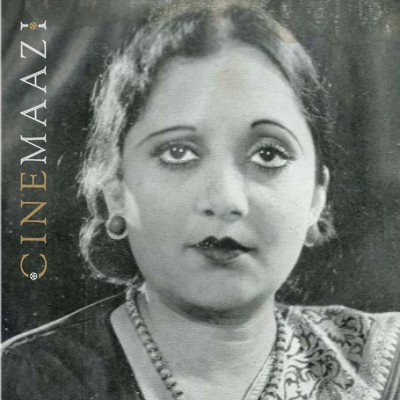Kanjibhai Rathod
Subscribe to read full article
This section is for paid subscribers only. Our subscription is only $37/- for one full year.
You get unlimited access to all paid section and features on the website with this subscription.
Not ready for a full subscription?
You can access this article for $2 , and have it saved to your account for one year.
- Primary Cinema: Hindi
Widely considered to be the first professional and successful director in Bombay cinema, actor and director Kanjibhai J Rathod is known for films from the silent era such as Bhakta Vidur (1921), Mahasati Ansuya (1921) and Baap Kamai (1925), up into the talkie era of the 1940s. He rose to fame in an era when cinema was in its early phase, and there was a stigma attached to it, leading many to stay away from it. Rathod has approximately 75 directorials to his credit, starting with early films such as Vikram Urvashi (1920), Vishwamitra Menaka (1921), Chandrahasa (1921), and encompassing films such as Bolti Bulbul (1926), Raj Hansa (1929), Nirbhagi Nirmala (1930), Laila Majnu (1931), Bhasmasur Mohini (1932), Sairandhri (1933), Sati Anjani (1934), Ghunghatwali(1938), , Anjaam (1940), and Shethno Salo (1949).
Belonging to the village of Maroli in south Gujarat, film historian Virchand Dharamsey writes that Rathod hailed from a poor background of Dalit community. A former still photographer with the Oriental Film Company, in the year 1919, he joined Suchet Singh as an actor, appearing in Mrichhakatik (1920). This historical romantic drama inspired from Mrichchhakatika, a ten-act Sanskrit drama, depicted the twists and turns in the life of Vasantsena, a wealthy courtesan who falls in love with an impoverished, previously married Brahmin, Charudatta. Despite their mutual affection, the couple's lives and love are threatened when a vulgar courtier, Samsthanaka, also known as Shakara, begins to aggressively pursue Vasantasena. The film explored how their love story pans out, against the odds.
Rathod played the lead in Narasinh Mehta (1920) directed by Suchet Singh and probably completed the unfinished films of Singh’s Oriental Film with G.S. Devare. His experience earned him a job in Kohinoor Film Company, India’s largest and most influential silent studio, in 1920, and its owner Dwarkadas Sampat made him a director. He was the first filmmaker to direct a crime thriller in 1920s on contemporary events. His Kala Naag (1924) was based on an infamous double murder case in Bombay, while he is also credited with introducing Zubaidato the film industry. At Kohinoor, he remained top director with the 20s hit Gul-e-Bakavali (1924) and the celebrated Bhakta Vidur (1921). Gul-e-Bakavali was one of the most successful silent films, which told the legend of the fairy Bakavali (Zubeida), her deivi pushp (or divine flower) Gul known for its healing powers, and the Eastern prince Taj-ul-Mulk (Khalil), who wants the flower to cure his blind father. It was a favourite on the Parsi stage, especially the scenes where Taj-ul-Mulk faces his villainous brothers who steal the flower as Bakavali is turned to stone and installed in a temple, and her human re-birth. Rathod’s version of this story, which was remade several times, was made in 97 scenes. It was one of the first films to embrace the folk-fantasy mode. The story of Bhakta Vidur is based on Hindu epic Mahabharata and depicts a series of conflicts between Pandavas and Kauravas. In this film the Hindu mythological character Vidur was moulded on the personality of Mohandas Karamchand Gandhi. Incidentally, this was the first Indian film to perhaps criticise British colonialism, and it became the first Indian film to face a ban, for political reasons.
With many films to his name, Kanjibhai Rathod then joined Saurashtra Film in Rajkot from 1924 till 1925. He became the force behind Krishna Studio after 1925—barring a brief stint at the Kohinoor United Artists. His Kono Vak?(1929) was based on a K M Munshi story, and showcased a typical transformation of a reform novel into a social. He made five sound films for Krishna Movietone in 1931.
Dharamsey’s 'Light of Asia: Indian Silent Cinema 1912–1934' states that Rathod directed five talkies out of 17 made in 1931. While Rathod remained active in the industry even in 1940s, he was not as successful directing talkies.
Rathod briefly worked in talkies at Sagar, and then went on to make a few inexpensive films in Hindi and Gujarati as a freelancer. Towards the end of his career he was employed as production manager in Dhirubhai Desai’s Chandrakala Pictures on films such as Saranga (1961). Several of Rathod’s silent films were remade by Desai, including Bolti Bulbul (1942), and Devkanya and Bhakta Prahlad (both 1946).
References
Additional information courtesy: Indiancine.ma
-
Filmography (59)
SortRole
-
Gul Badan 1937
-
Punjab Ka Sinh 1936
-
Raj Hansa 1929
-
Rukmini Haran 1929
-
Chandrahasa 1928
-








.jpg)



